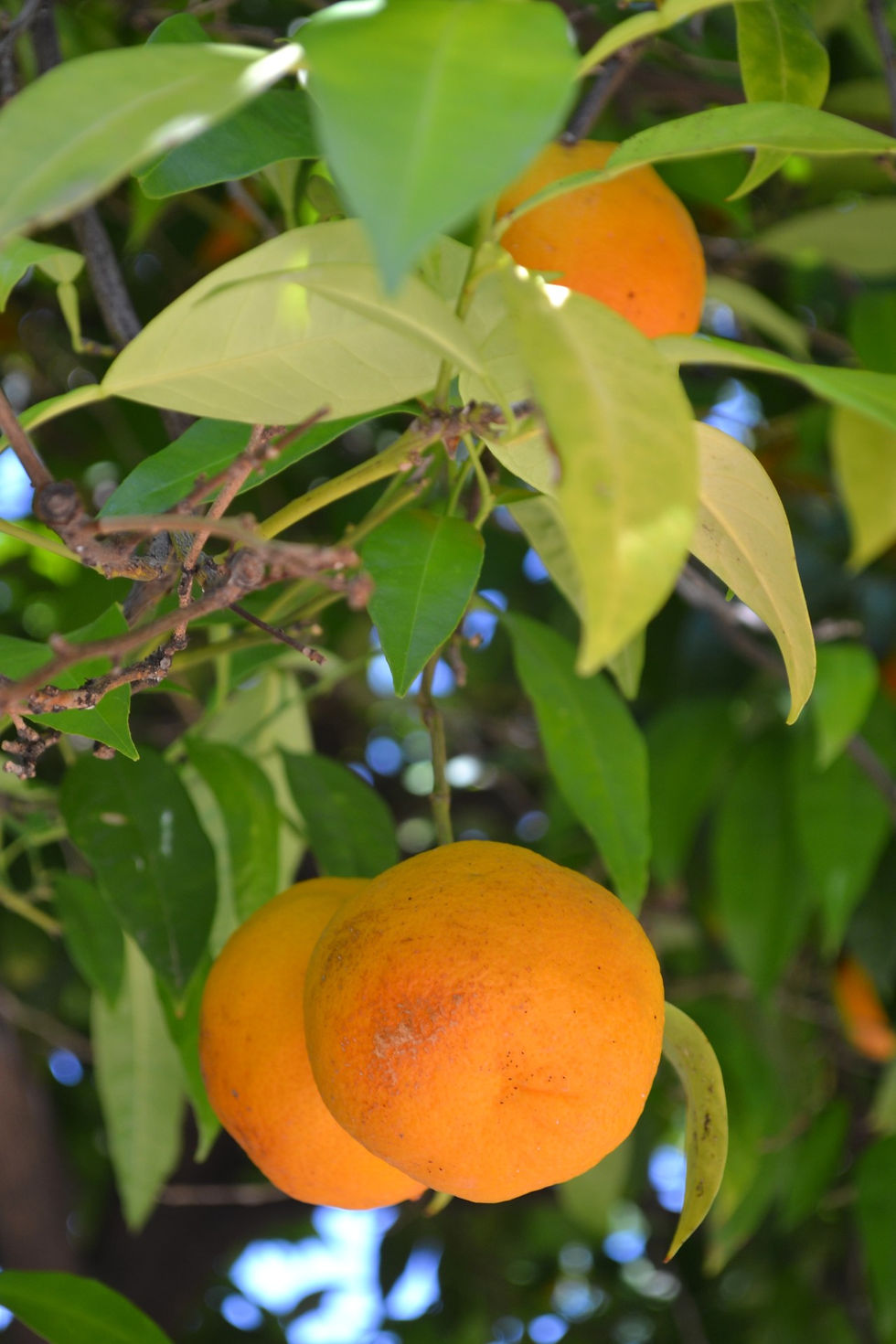a glimpse inside the gardens of
Mohammed Ali's House
Name: Orange Tree
Scientific name: Citrus × sinensis
Family: Rutaceae
Flowering period: April - May



Description :
The orange tree is an evergreen, citrus tree, native to India and China. It is usually a small tree that reaches a maximum height of 8 meters. It does not tolerate very low temperatures and therefore thrives in tropical and temperate regions with mild winters.
Its trunk is smooth and straight, its roots are rich, but without reaching a great depth. The branches form angles and have elasticity, so that they can withstand quite a large weight of fruits. Its leaves are medium in size, broad and smooth. During the month of April, some of the old leaves fall and are replaced by new ones. Its flowers are white, quite large and fragrant. The early varieties ripen their fruits, the oranges or citrus fruits, from October, while the late varieties ripen in the summer months. Orange trees bear edible fruit for about 80 years.
Usage & History:
In addition to cooking and making jam, many varieties of oranges are used to produce essential oils. Orange is rich in vitamin C, fiber, salts and antioxidants, which is why its regular consumption prevents many diseases.
Intensive orange cultivation began in 10th century AD in northern Africa, although it has been known since ancient times. In Ancient Greek times, they were perhaps only known to those who traveled to distant places and they had acquired a mythical essence, as one can understand by the myth of the Hesperides. The nymphs Hesperides were responsible for guarding the tree with the "golden apples", which was in the garden of the gods. The ancients believed that if you ate at least one fruit, you would gain immortality. In many cultures citrus fruits are symbols of euphoria, fertility and wealth.
Around 1490, the orange tree reached the Mediterranean countries by Portuguese sailors and it is likely that it owes its name to them. Then, from the Mediterranean it spread to Europe, and through Spanish missionaries to North America. Until the 18th century, orange trees were cultivated only as an ornamental species, due to people's ignorance of the multiple beneficial properties of the orange.



